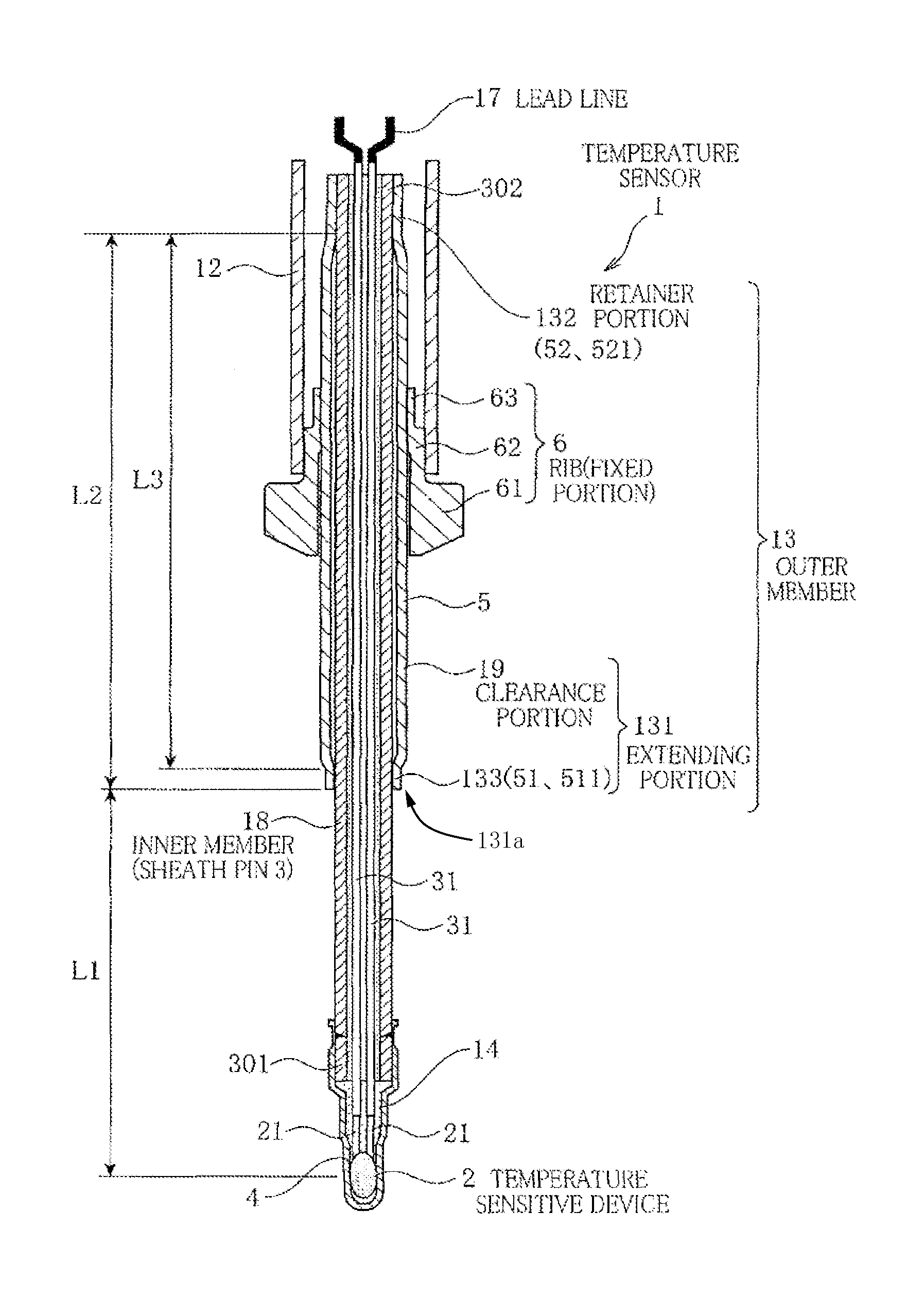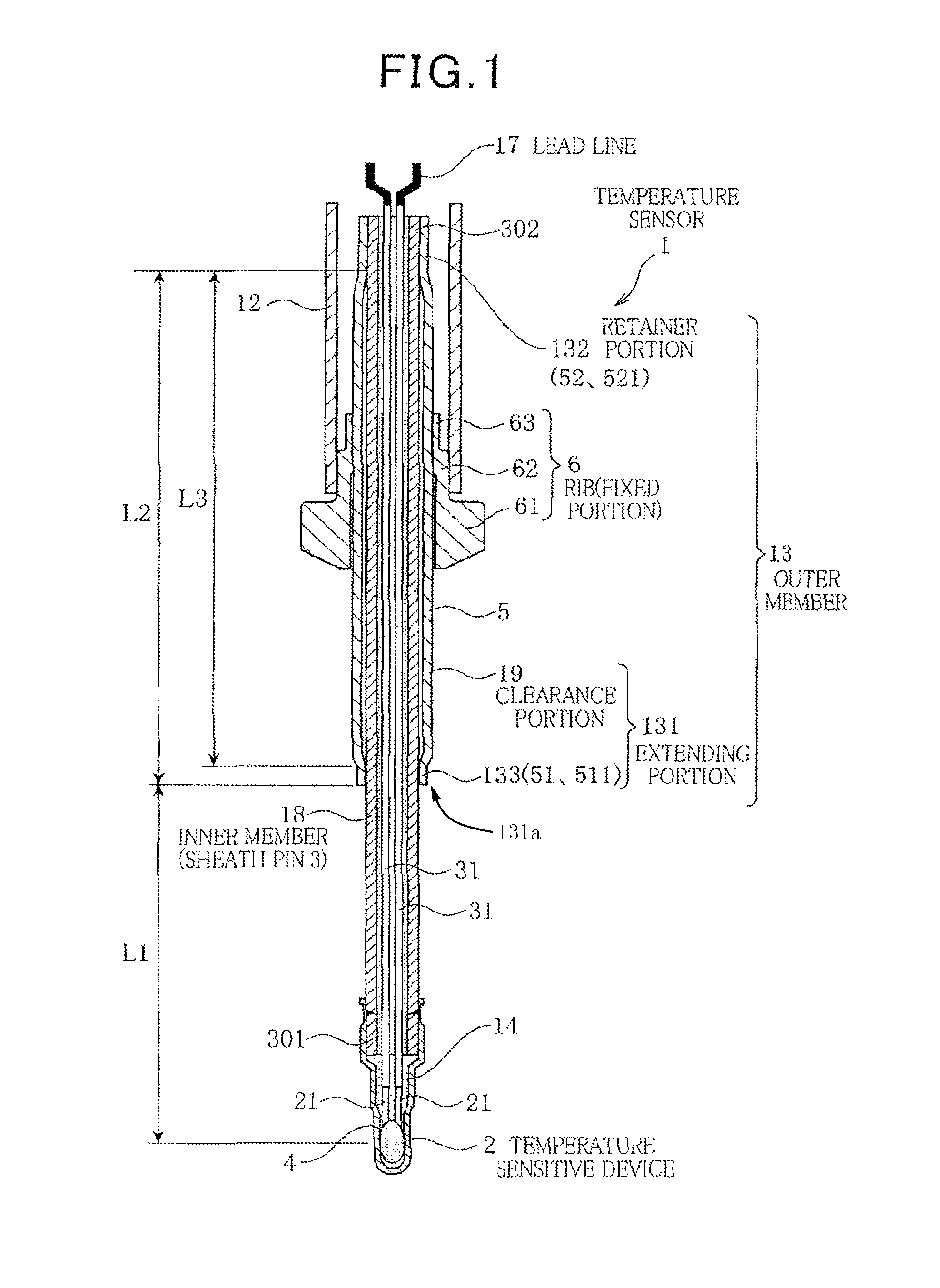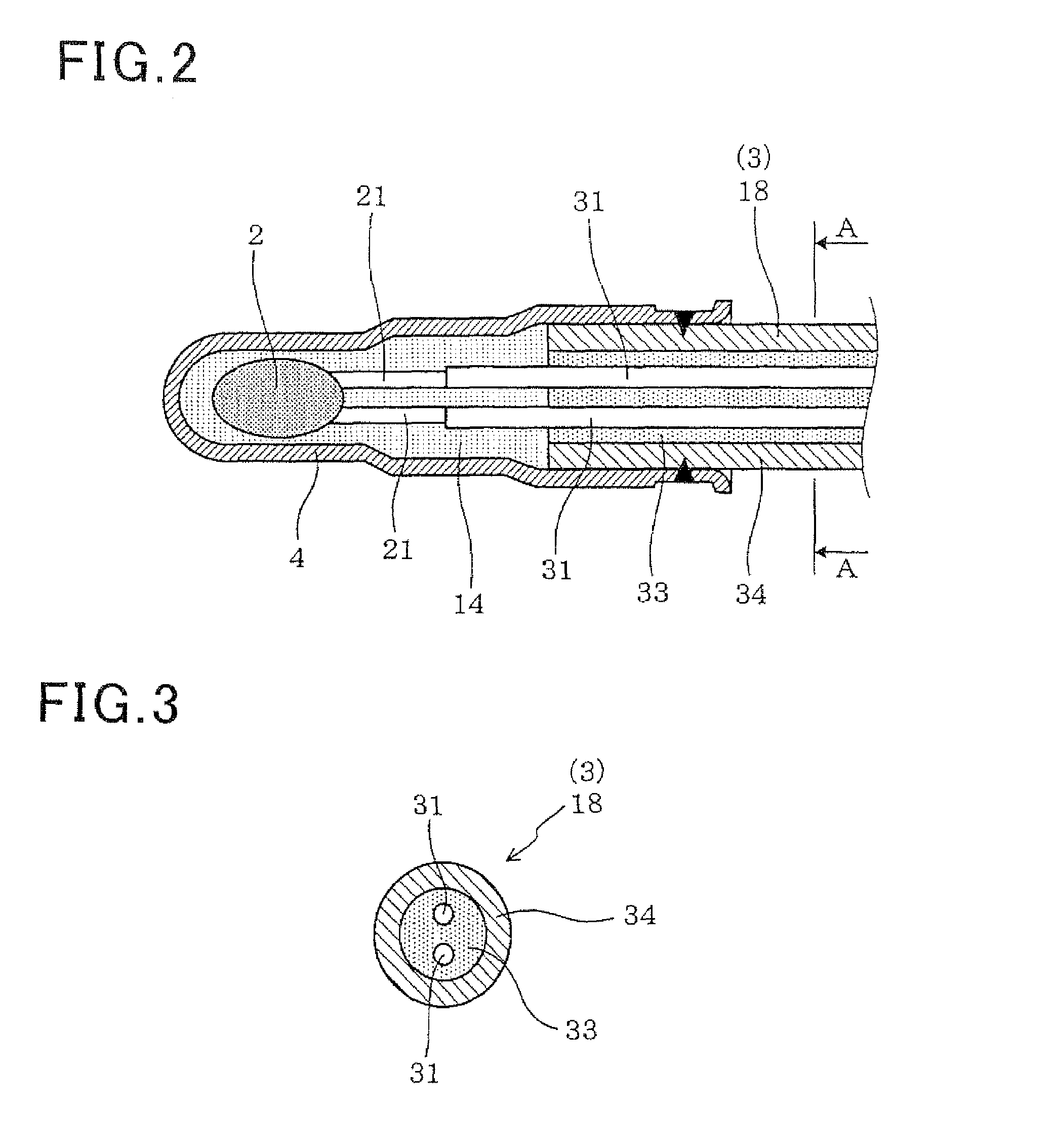Temperature sensor
a technology of temperature sensor and sheath pin, which is applied in the field of temperature sensor, can solve the problems of cracking or breaking of welds or sheath pins, and achieve the effects of reducing acceleration, preventing the amplitude of inner members, and suppressing vibration
- Summary
- Abstract
- Description
- Claims
- Application Information
AI Technical Summary
Benefits of technology
Problems solved by technology
Method used
Image
Examples
embodiments
Embodiment 1
[0130]The temperature sensor according to an embodiment of the invention will be described below using FIGS. 1 to 4.
[0131]The temperature sensor 1 of this embodiment includes a temperature sensitive device 2 which is to be disposed in an exhaust pipe of an internal combustion engine, a pair of signal lines 31 which are connected at the top end side to the temperature sensitive device 2 and at the rear end side to lead wires 17 for connection with an external circuit, and an inner member 18 having a sheath pin 3 in which the signal lines 31 are disposed, and an outer member 13 disposed so as to surround at least a portion of an outer periphery of the inner member 18. The temperature sensor 1 has a metallic cover 4 disposed on a top end portion to cover the temperature sensitive device 2.
[0132]A guard tube 5 is disposed closer to the rear end side than the metallic cover 4 to cover the outer periphery of the sheath pin 3. The guard tube 5 has a rear end 52 thereof fixed to...
embodiment 2
[0177]This embodiment is to provide the temperature sensor 1 in which the air gap 11 (see FIG. 4) is not formed between the inner peripheral surface of the top end 51 of the guard tube 5 and the outer peripheral surface of the sheath pin 3.
[0178]Specifically, the temperature sensor 1 of this embodiment is so designed that the size S of the air gap 11 in FIG. 4 is zero (0).
[0179]In this embodiment, the top end 51 of the guard tube 5 may be placed in contacting abutment with the sheath pin 3. The top end 51 of the guard tube 5 is not fixed to the sheath pin 3 through, for example, welding. In this case, the parallel portion of the front interference portion 133 is in contact with the inner member 18 (i.e., the sheath pin 3), that is, placed in surface contact therewith when the size S of the air gap 11 is almost zero (0).
[0180]Other arrangements are identical with those in the first embodiment. The same effects as in the first embodiment are provided.
embodiment 3
[0215]This embodiment is an embodiment of the temperature sensor 1 in which the temperature sensitive device 2 is hermetically sealed by glass.
[0216]Other arrangements are identical with those in the first embodiment.
[0217]In this embodiment, it is possible to ensure the temperature measurement when the temperature sensor 1 is used in hot environmental conditions where a maximum temperature is 1000° C.
[0218]Specifically, in the above hot environment, the oxidation of the metal head cover 4 surrounding the temperature sensitive device 2 is accelerated, which result in a drop in concentration of oxygen within the metal head cover 4. This may cause the oxygen to leave the temperature sensitive device 2 to compensate for the drop in concentration of oxygen, so that the temperature sensitive device 2 is reduced, thus changing the performance thereof. The sealing of the temperature sensitive device 2 with the glass material minimizes this problem and ensures the accurate temperature measu...
PUM
| Property | Measurement | Unit |
|---|---|---|
| radius | aaaaa | aaaaa |
| frequency | aaaaa | aaaaa |
| size | aaaaa | aaaaa |
Abstract
Description
Claims
Application Information
 Login to View More
Login to View More - R&D
- Intellectual Property
- Life Sciences
- Materials
- Tech Scout
- Unparalleled Data Quality
- Higher Quality Content
- 60% Fewer Hallucinations
Browse by: Latest US Patents, China's latest patents, Technical Efficacy Thesaurus, Application Domain, Technology Topic, Popular Technical Reports.
© 2025 PatSnap. All rights reserved.Legal|Privacy policy|Modern Slavery Act Transparency Statement|Sitemap|About US| Contact US: help@patsnap.com



